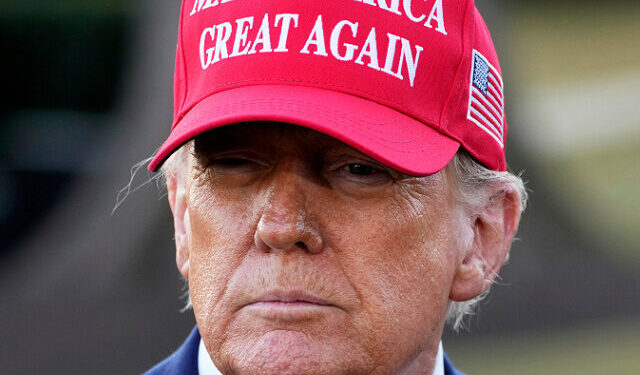President Donald Trump announced on Monday that his administration will move forward with imposing a 25% tariff on goods from Canada and Mexico, with the policy officially taking effect on Tuesday.
Speaking at a press conference where he celebrated a massive $100 billion investment from Taiwan Semiconductor Manufacturing Co. (TSMC) into the U.S. economy, Trump reiterated his commitment to protecting American industry and workers through strong trade policies.
The President used the moment to encourage car manufacturers currently operating in Canada and Mexico to relocate their production to the United States in order to bypass the new tariffs.
“And I would just say this to people in Canada or Mexico—if they’re going to build car plants, the people that are doing them are much better off building here because we have the market. We’re the market where they sell the most, and so I think it’s going to be very exciting, very exciting for the automobile companies,” Trump stated.
Originally, the tariffs were set to take effect on February 4, but a last-minute agreement between the U.S., Mexico, and Canada led to a four-week pause. In exchange for the delay, both neighboring countries agreed to strengthen security at their respective borders to curb illegal immigration and drug trafficking.
While that agreement temporarily halted the tariffs, the President made it clear that no further delays would be granted.
When asked if Mexico or Canada could still strike a deal before the deadline, Trump firmly shut the door on any last-minute negotiations.
“No room left for Mexico or for Canada. No, the tariffs, you know, they’re all set. They go into effect tomorrow,” he stated unequivocally.
Tougher Stance on China
Alongside these tariffs, Trump also reaffirmed his administration’s tough stance on China, placing an additional 10% tariff on Chinese goods, bringing the total to 20%. He cited national security concerns and the ongoing fentanyl crisis as a major factor in his decision.
“Just so you understand, vast amounts of fentanyl have poured into our country from Mexico, and as you know, also from China, where it goes to Mexico and goes to Canada,” Trump explained. “And China also had an additional ten. So it’s ten plus ten.”
The implementation of these tariffs marks another step in President Trump’s America First economic agenda, designed to restore American manufacturing, strengthen domestic job creation, and hold foreign nations accountable for policies that harm the U.S. economy.
While critics argue that tariffs could increase prices for American consumers, supporters believe this strategy will ultimately lead to fairer trade deals, economic growth, and a more secure national border.
The President’s unwavering stance on trade is yet another example of his commitment to putting American workers first. With these tariffs set to take effect, businesses operating in Canada and Mexico now have a clear choice: continue paying hefty import duties or bring jobs back to American soil.
The message from the White House is clear—America will no longer tolerate unfair trade practices or lax border enforcement. The question now is how Canada and Mexico will respond as these policies take hold.
Stay tuned for updates as the economic impact of these tariffs unfolds in the coming weeks.





















Фрибет без депозита — открытие для всех, и разнообразно.
Бк с фрибетом [url=https://marina-sk.ru]https://marina-sk.ru[/url] .